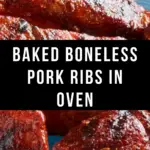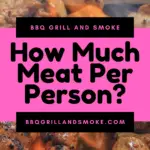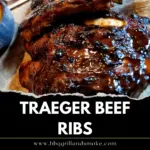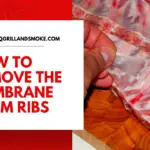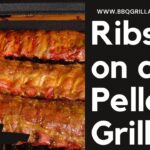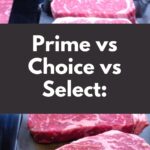Smoked beef ribs are hard to beat if you’re looking for a delicious, smoky, and tender barbecue dish. Cooking them low and slow on a pellet grill brings out their full flavor and makes the meat fall-off-the-bone good. Whether you’re a seasoned pitmaster or just getting started, this guide will walk you through the whole process, step by step.
What Are Beef Ribs?
Beef ribs come from the rib section of the cow. There are two main types: back ribs and plate ribs. Back ribs are leaner and smaller, often found behind prime rib roasts. Plate ribs, sometimes called “dino ribs,” are bigger, meatier, and packed with flavor. We’ll use plate ribs for this recipe, which are perfect for smoking.
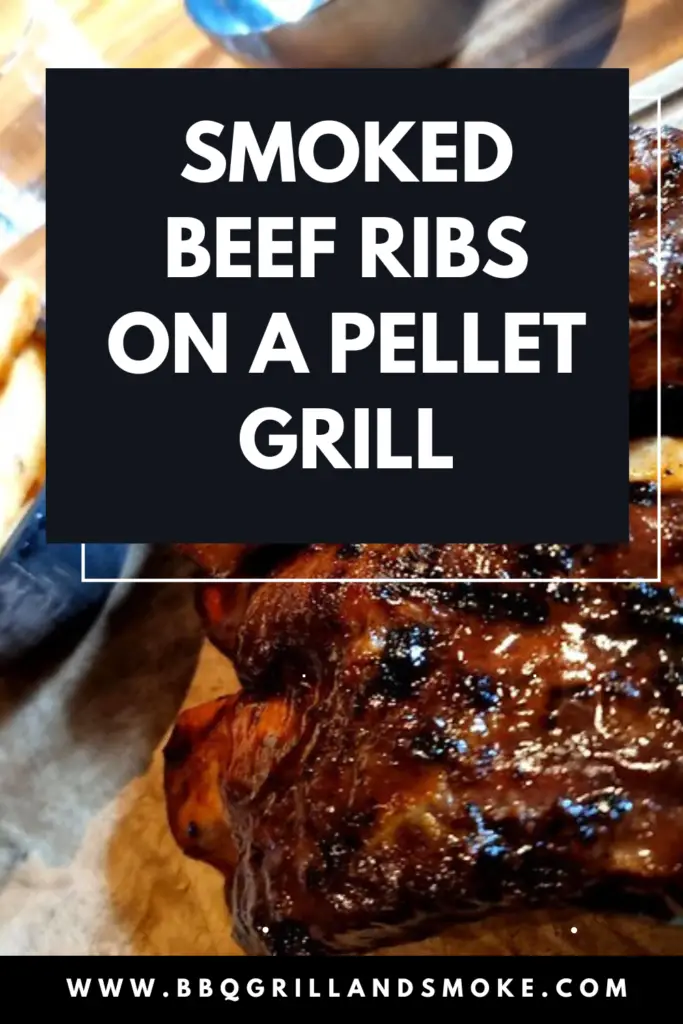
Why Use a Pellet Grill?
Pellet grills are great for smoking meat because they combine the best of both worlds: the flavor of real wood smoke and the convenience of automatic temperature control. You load wood pellets into the hopper, set your temperature, and let the grill do most of the work. This makes smoking beef ribs easier and more consistent, especially for beginners.
Choosing the Right Beef Ribs
There are different types of beef ribs, and choosing the right one matters. For this recipe, we recommend:
Beef Plate Ribs (aka Dino Ribs): Thick, meaty, and incredibly flavorful. These are the kings of beef ribs.
Chuck Ribs: Smaller than plate ribs but still delicious.
Back Ribs: Less meat, but still worth smoking if you find a good rack.
Try to find ribs with a good amount of marbling and meat between and on top of the bones.
Ingredients You’ll Need
For the ribs:
- 1 rack of beef plate ribs (about 3 bones)
- Yellow mustard or olive oil (binder)
- Your favorite beef rub (or make your own)
For homemade rub (optional):
- 2 tbsp kosher salt
- 1 tbsp coarse black pepper
- 1 tbsp paprika
- 1 tsp garlic powder
- 1 tsp onion powder
- 1 tsp cayenne (optional for heat)
Optional mop or spritz:
- Apple cider vinegar and water (50/50 mix)
- Beef broth
Step-by-Step Instructions
- Trim the Ribs
Use a sharp knife to remove any excess fat or silver skin from the top of the ribs. Leave the fat cap intact if it’s not too thick. Flip the ribs over and remove the membrane from the bone side by sliding a butter knife under it and pulling it off with a paper towel. - Apply Binder and Rub
Rub a light layer of mustard or olive oil all over the ribs. This helps the seasoning stick. Then generously apply your rub on all sides of the meat. Press it in gently so it sticks well. - Preheat the Pellet Grill
Set your pellet grill to 250°F and use oak or hickory pellets for a deep, smoky flavor. Let the grill come up to temperature before placing your ribs inside. - Place the Ribs on the Grill
Once your grill is ready, place the ribs bone-side down directly on the grate. Close the lid and let the smoke work its magic. - Spritz Every Hour
After the first hour, start spritzing the ribs every 45–60 minutes with your apple cider vinegar/water mix or beef broth. This helps keep the ribs moist and builds up a great bark. - Smoke Until They Reach 165–175°F Internal Temp
Let the ribs smoke for about 4–5 hours, or until the internal temperature reaches 165–175°F. At this stage, the bark should be set, and the ribs will have a nice color. - Wrap the Ribs (Optional)
If you like super juicy ribs, wrap them in butcher paper or foil at this point and continue smoking. This helps push them through the “stall” when the internal temperature plateaus. - Cook to Final Temperature: 200–205°F
Continue cooking until the ribs hit an internal temp of 200–205°F. Use a meat probe to check for doneness. The probe should slide in like butter with no resistance. - Rest the Ribs
Remove the ribs from the grill and let them rest for at least 30 minutes, wrapped in foil or butcher paper and placed in a cooler or warm oven. This helps the juices redistribute. - Slice and Serve
Slice between the bones and serve. The meat should be tender, juicy, and packed with smoky goodness. Serve with classic barbecue sides like coleslaw, baked beans, or cornbread.
Tips for Success
Don’t rush: Low and slow is the name of the game. Give the ribs time to break down and become tender.
Use a meat thermometer: Guessing can lead to dry or undercooked ribs. Invest in a good thermometer.
Let the bark form: Don’t spritz too early or too often. Let the rub and smoke do their work.
Resting is critical: Skipping the rest can lead to dry meat.
Flavor Variations
- Texas-style: Just salt and pepper for a true Central Texas flavor.
- Sweet and smoky: Add brown sugar and chili powder to the rub.
- Spicy: Add cayenne and chipotle powder for heat.
Common Mistakes to Avoid
Cooking too hot: This can make the meat tough.
Over-smoking: Too much smoke can make the ribs bitter.
Skipping the wrap: If your ribs get too dry, a wrap can help. But if you love bark, leave them unwrapped longer.
Final Thoughts
Smoked beef ribs on a pellet grill are the ultimate weekend barbecue project. They’re rich, satisfying, and incredibly flavorful. The pellet grill takes away much of the guesswork, making it accessible even for beginners. With a bit of patience and some quality ingredients, you’ll end up with a dish that’s worthy of any backyard feast.
So fire up that pellet grill, grab a cold drink, and get ready to enjoy some seriously good barbecue.
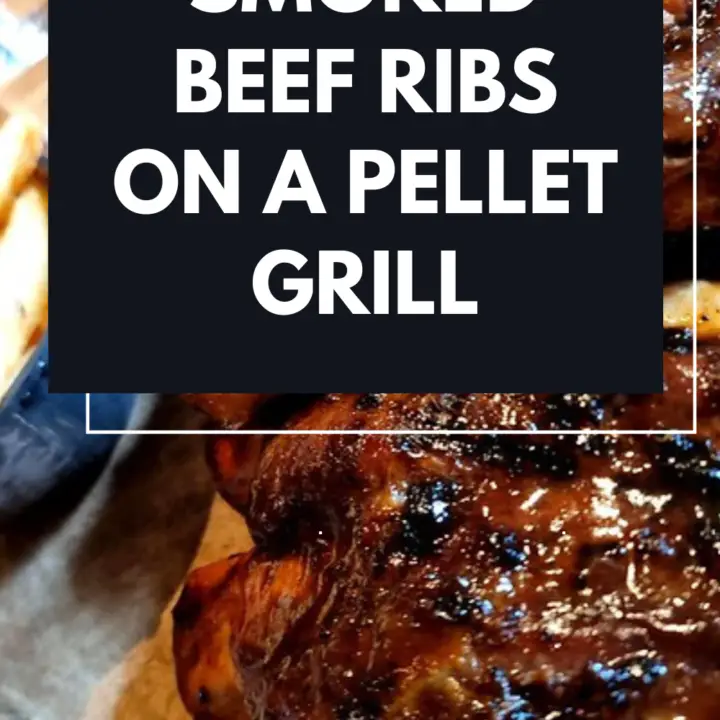
Smoked Beef Ribs on a Pellet Grill
Smoked beef ribs on a pellet grill are the ultimate weekend barbecue project. They’re rich, satisfying, and incredibly flavorful.
Ingredients
For the ribs:
- 1 rack of beef plate ribs (about 3 bones)
- Yellow mustard or olive oil (binder)
- Your favorite beef rub (or make your own)
For homemade rub (optional):
- 2 tbsp kosher salt
- 1 tbsp coarse black pepper
- 1 tbsp paprika
- 1 tsp garlic powder
- 1 tsp onion powder
- 1 tsp cayenne (optional for heat)
Optional mop or spritz:
- Apple cider vinegar and water (50/50 mix)
- Beef broth
Instructions
- Trim ribs and remove membrane.
- Apply mustard or oil and rub generously.
- Preheat pellet grill to 250°F with oak/hickory pellets.
- Place ribs bone-side down on the grate.
- Spritz every hour with cider vinegar mix or broth.
- Smoke until 165–175°F, then optionally wrap.
- Cook until 200–205°F, probe tender.
